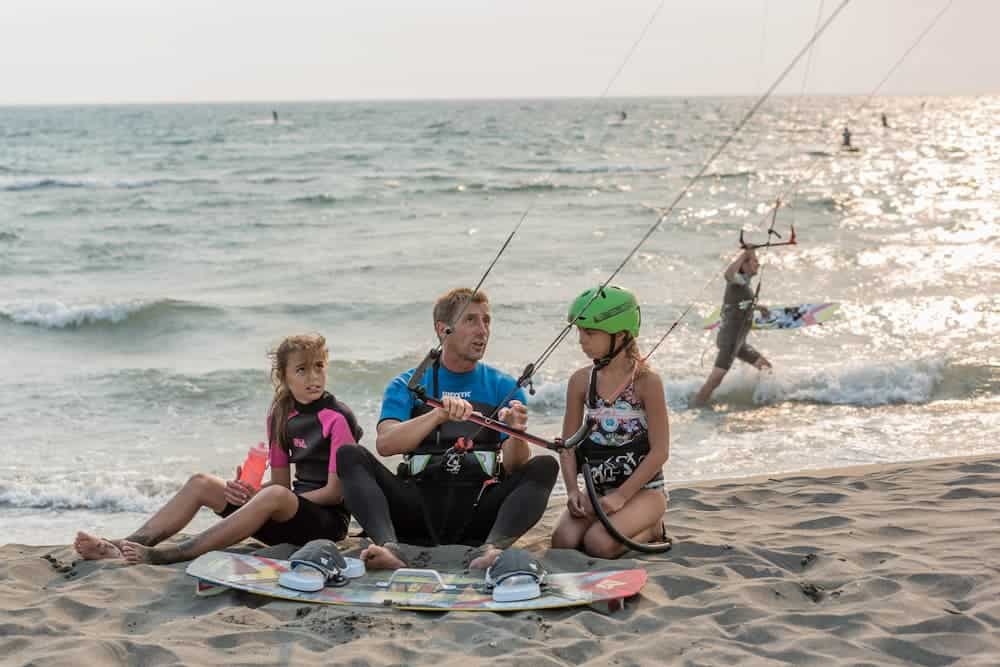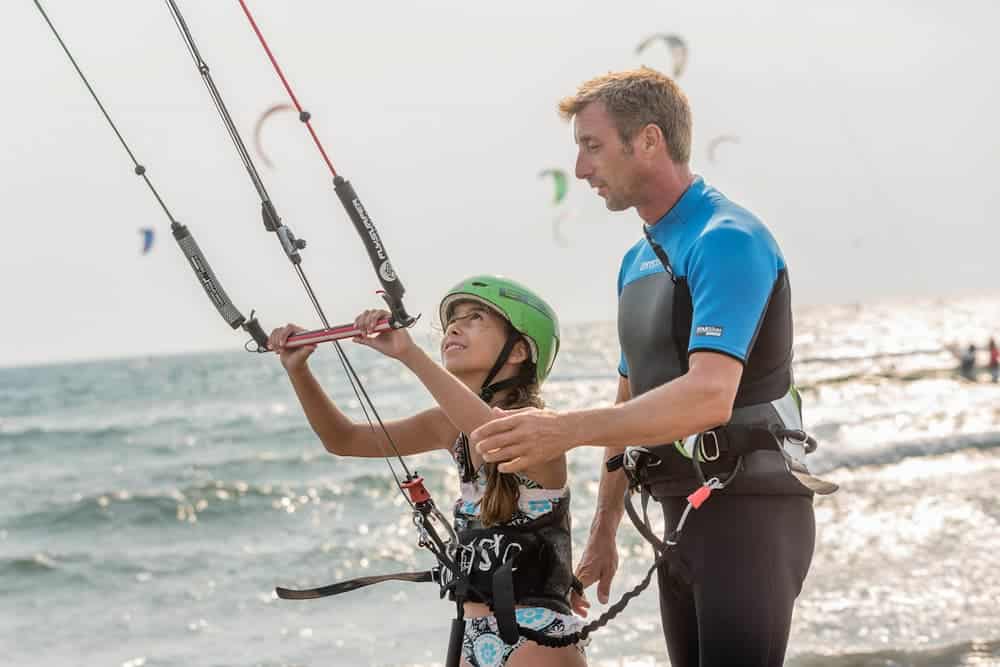So, you’ve finally decided to enrol in a kitesurf school and have your first-ever kitesurfing lesson. Good for you! But you don’t have to wait for your first day to get to know this thrilling water sport. The best way to make the most of your learning experience is to come prepared in mind and body. This to-do list should give you a head start on your kitesurfing journey.
Why Take a Kitesurfing Lesson
But first, you may be wondering whether a kiteboarding lesson is indeed necessary. Is it wise to enrol in one? Absolutely! For one thing, it will save you time and money. Yes, you will have to spend on lessons, but you’ll be using the school kit. That means there’s no need to invest in a new kite yet while training.
If you wish to learn how to kitesurf fast, you have to do it properly with qualified instructors. Your trainer will teach you more than basic kite skills, though. He or she can also give you advice and constructive feedback to help you improve. Moreover, your experienced instructor can boost your focus and confidence.
Lastly, kitesurfing is an extreme water sport. You’ll be controlling the kite, board and wind all at the same time while in the water. You can seriously hurt yourself or others if you do not have the fundamental skills. Getting a kitesurfing lesson then ensures a pleasant experience and your safety.
How to Prep for Your Kitesurfing Lesson
Study the training course
Your kiteboarding lesson will likely focus on teaching you three things: kite flying on land, kite flying in water and riding on a kiteboard. Within the beginner stage, you’ll be learning various wind conditions, gusts, tides and currents. Your instructor will also orient you about your equipment and how to tune and care for it. More importantly, you’ll learn how to control your speed, stay upwind and observe safety measures.
Should you buy your kitesurfing equipment? Well, not right away, as most instructors will provide a school kit for you to use. It is also likely that you’ll outgrow your starter equipment quite quickly. So, it’s best to wait for your training to end and ask your instructor for recommendations.

Watch instructional beginner videos
Some of us might have learned how to cook while watching a demo video, so why not do the same before your kitesurfing lesson? However, it cannot be your substitute for kitesurfing schools. Still, knowing what to expect during your classes can speed up your learning curve. So, watch as many helpful kitesurfing videos as you can. Study kiteboarding terms and moves, too.
Be familiar with the basics
While videos can help a lot, actual kitesurfing is, of course, very different. What you can do, however, is to get your body accustomed to the basics of kite flying and board control. The best way to start is to fly a trainer kite. It can help you understand wind window and power in advance. You can even ask a kiteboarding mate to help you practice.
Also, if there’s a cable-ski centre near you, I suggest you try wakeboarding as well. Wakeboarding is perhaps the closest cousin of kitesurfing, plus you’ll be using a similar board for your beginner lessons. You can then use this sport to feel more comfortable and start honing your board riding skills. Practising the basics will surely make it easier for you to combine every skill needed for kitesurfing.
Achieve a moderate level of fitness
OK, you don’t need Olympic-level fitness or bulky biceps to kitesurf. Kitesurfing relies heavily on equipment control rather than physical abilities. What matters is you keep training with the right kite and listening to your instructor.
However, it also helps to have a reasonable level of flexibility and body strength before your class. Kitesurfing is still a sport, after all. Stamina and endurance are crucial in completing your training. Besides, getting back on the fitness track won’t hurt anyway and can give you several benefits aside from acing your kitesurfing lesson!

Practice patience
No one can kitesurf or do any sport like a pro on the first try. It just won’t happen overnight. So, aim to excel in every class, but expect to fall in the water. Think of every error you make as your building block to be an advanced kiter. And besides, mastering every stage in a flash makes the sport less fun. The challenge of learning something new keeps us going, after all.
Typically, first-timers can kitesurf with ease after three days of 4 hours per day of training. If you’ve tried power kiting, wakeboarding or skateboarding before, then you pretty much have the skills needed to kitesurf. These skills will surely make it easier for you to adapt to ever-changing wind speed and direction.
Talk to your instructor
Do you need the instructor to repeat his explanation? Is there something you don’t understand? Ask away and do not hesitate! There’s no better person to answer your questions than your kitesurfing teacher. So, if you are taking lessons overseas, it’s best to hire an instructor with whom you can communicate with ease.
Information overload is typical at the beginning stages of your kitesurfing lesson, so ask your instructor to slow down or repeat things when needed. Welcome his observations and constructive comments, too. If you feel tired and need a break, let him know as well. Try to make the most of your lesson time and ask him for tips or advice when you can. Inform your instructor of your learning difficulties so he can adjust his teaching methods, too.
Get in the zone
Your first day may not turn out as good as you’ve hoped, but in the end, you know you can do it. So, stay positive and keep envisioning what your instructor has taught you. Before your class, spend a few minutes breathing and calming yourself. Mental conditioning is more potent than you think. Concentrate and keep your eyes on the prize!
What to Do after Training
Continue practising, of course! Join a kitesurfing community in your area, too. Spending time with advanced riders will help you go beyond the basics and learn additional tricks. Lastly, stay safe and have fun! And if you’re looking for the best kitesurfing spot to test your board riding skills, Australia easily tops the list. And I have six reasons why!
- How to Clean and Care for Your Sleeping Bag - January 6, 2022
- 6 Best Things to Do in Perth for Free - December 3, 2021
- Swag vs Tent: Which One is Better? - November 5, 2021

